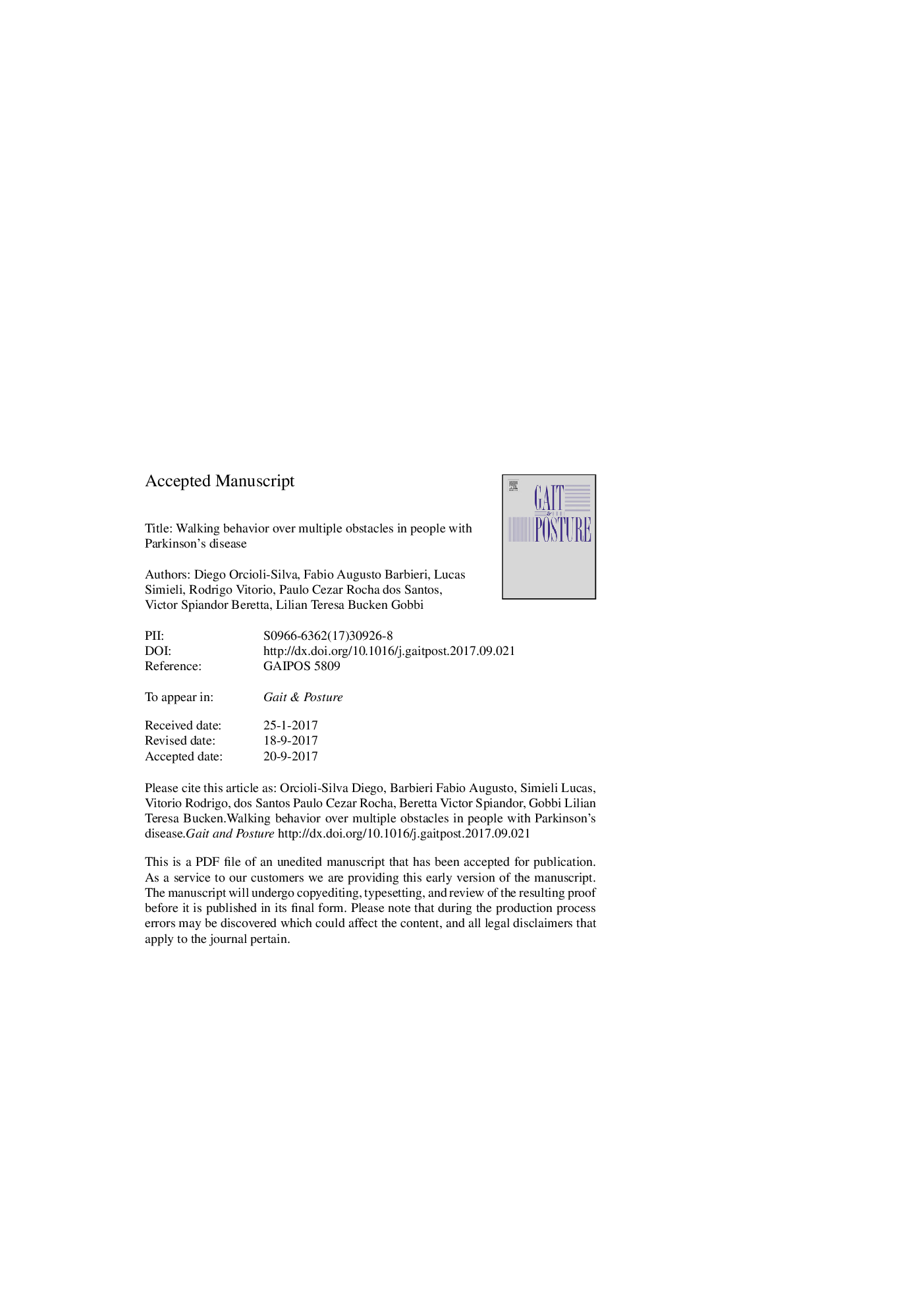| Article ID | Journal | Published Year | Pages | File Type |
|---|---|---|---|---|
| 5707661 | Gait & Posture | 2017 | 23 Pages |
Abstract
The presence of a second obstacle changed the planning and adjustments for obstacle avoidance performance, but this context is poorly understood in Parkinson's disease (PD). The aim of this study was to investigate the walking behavior over multiple obstacles in people with PD. Nineteen people with PD and 19 healthy individuals walked across an 8Â m pathway, performing three trials for following conditions: unobstructed walking, walking with one obstacle avoidance (Single), and walking with two obstacles avoidance (Double). In the Double condition, the analysis was performed only for the first obstacle (First Double). The dependent variables were calculated separately for the approach and crossing phases in the obstacle conditions. The main results show that people with PD decreased single support and increased double support phase in both Single and Double conditions compared to the unobstructed walking. Both groups increased stride duration during approach phase in the Double condition compared to the unobstructed walking and Single conditions. The presence of the second obstacle led to a decrease in trailing toe clearance during obstacle avoidance of the First Double. In conclusion, people with PD use a conservative strategy while approaching obstacles. Both groups need more time to obtain and process environmental information and plan the action in environments with multiple obstacles. The smaller leading toe clearance might be an indicative that the presence of a second obstacle increase the likelihood of tripping during obstacle avoidance in both people with PD and healthy individuals.
Keywords
Related Topics
Health Sciences
Medicine and Dentistry
Orthopedics, Sports Medicine and Rehabilitation
Authors
Diego Orcioli-Silva, Fabio Augusto Barbieri, Lucas Simieli, Rodrigo Vitorio, Paulo Cezar Rocha dos Santos, Victor Spiandor Beretta, Lilian Teresa Bucken Gobbi,
